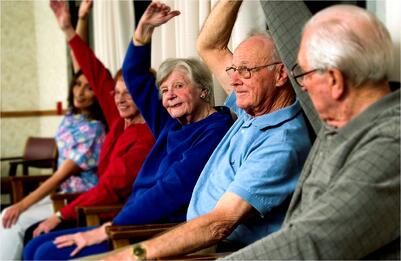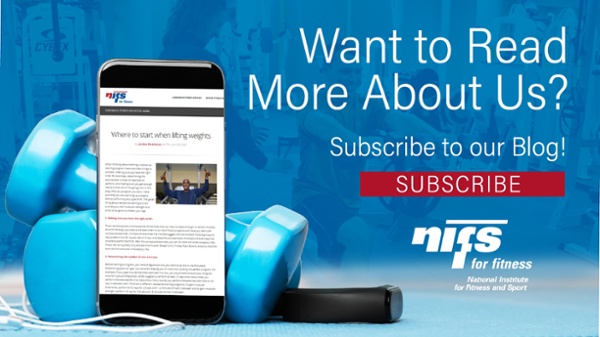In this blog, I want to run through a handful of questions that often come up when I have an initial call with a possible client who is interested in doing wellness better at their senior living community. But before I get too far into that information, I thought I should start by offering my definition of wellness so that we’re all on the same page for that terminology.
When I say wellness, I’m talking about multidimensional, active programming that can span the continuum and that fosters maximal participation throughout the community. It is not just fitness, or activities, or dining, or chaplain-based services, and it certainly isn’t clinic-based or born from a healthcare model. Wellness incorporates a very broad range of program and event types, and it’s built to provide purpose for the participant.
The other element to defining wellness that might be confusing is the distinction I make between wellness and activities. It is my opinion that building a true resident wellness program requires more than simply renaming your traditional activities program. You’ll need to consider existing personnel in your community and whether/how they can collaborate for improved offerings under a different strategy. You will also need to formulate a plan around changing how programs are developed, executed, and evaluated.
So with that context established, let’s get on to the questions and answers that you can use to benchmark where you are now with resident wellness and how to do wellness better.
Do you have dedicated staff who plan and execute a variety of activities for residents in the community?
In many communities, it’s common to hear that there is a resident wellness program, when in reality there’s an activities program, a fitness program, chaplain services, etc., all functioning in their own silos with limited collaboration.
For your wellness program to truly be robust, you need to have a leader at the helm of program/event development. There are a lot of ways to do this; sometimes it’s the activity director who assumes this role; and in other cases, this position is given to the fitness coordinator or social worker. You want to make sure you’re tapping the right person who can effectively lead a team, who has strong capacity for strategic thinking and collaboration, and who has a better-than-high-school understanding of human health.
Do you have dedicated fitness personnel who manage your exercise programming?
Even in 2015, the fitness “room” (if you will) still comes in all shapes and sizes. It is consistent to see some space dedicated to exercise equipment within most communities, and typically group exercise classes are held in other areas of the building. Pools are still very hit-or-miss in established senior living communities.
Best-in-class services for your residents demand a dedicated fitness professional (or team, depending on the size of your community and the desired scope of services) who can manage the exercise program for your community. That individual should have at least a bachelor’s degree in a health-related field with strong expertise in prescribing exercise for seniors. He or she should also be quite skilled at teaching a variety of basic group exercise classes. And that fitness manager absolutely needs an outgoing, approachable personality to go along with the technical expertise.
In most cases, we see a hodgepodge of group fitness instructors and personal trainers floating in and out of the community to support exercise activities for residents. While this approach will allow you to have some staff support in your exercise room as well as maintain your class schedule, you are failing to build a strong service that includes 1:1 attention for the residents as well as community-wide programming and data that can inform how the exercise program should evolve.
 What percentage of your community events/program are active (up, moving, interacting with others, learning, growing, doing) as compared to passive (sit-and-listen)?
What percentage of your community events/program are active (up, moving, interacting with others, learning, growing, doing) as compared to passive (sit-and-listen)?
Just because the residents are retired from their careers does not mean that they are retired from life. Providing opportunities for participants to learn new things, meet new people, discuss new concepts, and see new places builds a purpose-oriented lifestyle in your community. If more than 50% of your activities calendar includes routine programs like cards and sit-and-listen offerings, it’s time to take a fresh look at how you can build more person-centered offerings on a regular basis.
What percentage of your residents participate in the activities offered at your community?
In most cases, activities for senior living fall into the Pareto principle, where 20% of the residents are engaging in 80% of the activities. Often, we see this phenomenon in place because your activities and events planners have slipped into an order-taker role. Their ears are tuned to the vocal minority and they fill the calendar with ideas offered by the residents who are already participating. To get out of this order-taking mode and to start moving toward programming that attracts more than the same 20% who have been participating for years, you’ll have to try something different with your team and your expectations. This is where a strategic, multidisciplinary plan steps in.
How is programming developed and executed at your community?
When I talked about personnel in one of the earlier questions, I mentioned the individuals working in silos so that events happen independent of each other throughout the community. A more strategic approach to programming is warranted if communities are committed to engaging more residents in lifestyle on their campuses and appearing more attractive to hesitant consumers. This type of practice requires planning activities well in advance with input from a team of experts. It requires thinking that moves away from the one-and-done offerings and toward layered, multidimensional, inviting programs that have the members talking, connecting, participating, and learning.
It also requires a thoughtful approach to gathering data for the programs. Each offering should be created with an intended purpose that is measurable. Program plans should be built with that goal in mind, and tactics designed to help achieve that goal should be identified. When the program is complete, the team should evaluate whether and how they achieved their goal, as well as identify what they learned in the process that can be used for more effective programming in the future.
So, now that you’ve finished all the questions and answers, where does your community stand? If you’re ready to do wellness better, we have some tools that might be helpful. See the list below for those additional resources:
- NIFS Best Practice Programs for Senior Living
- NIFS Build Vitality Webinar Series
- NIFS Slideshare: 3 Keys to Improving Resident Engagement in Wellness
Not sure how to start evaluating your resident wellness program? Contact us below.



 Our staff has found that getting employees moving can be difficult. It is very often that our members speak of a variety of barriers that prevent them from exercising. We have all experienced hectic schedules that interfere such as work meetings and events, overtime, family events such as a child’s activities. It’s our job to help our members find ways to fit it in to their schedule, make time for themselves to live a healthier lifestyle. Be Active Be Fit is a program that was developed to encourage participants to strive for 150 minutes of physical activity a week for 8 weeks. Participants are encouraged to count any time they are doing physical activity no matter what the activity. Whether you prefer to bike or run, maybe you walk or swim, right down to mowing the yard and cleaning the house with reasonable effort can count.
Our staff has found that getting employees moving can be difficult. It is very often that our members speak of a variety of barriers that prevent them from exercising. We have all experienced hectic schedules that interfere such as work meetings and events, overtime, family events such as a child’s activities. It’s our job to help our members find ways to fit it in to their schedule, make time for themselves to live a healthier lifestyle. Be Active Be Fit is a program that was developed to encourage participants to strive for 150 minutes of physical activity a week for 8 weeks. Participants are encouraged to count any time they are doing physical activity no matter what the activity. Whether you prefer to bike or run, maybe you walk or swim, right down to mowing the yard and cleaning the house with reasonable effort can count. 
 From the
From the 
 It is a time of change and excitement. Out with the old and in with the new. Things will be bright and shiny and…different. During the short or lengthy time that your fitness center is undergoing renovations, how do you gratify your members? Having a cutting edge corporate or active aging fitness center is what everyone strives for…but if you don’t have any members waiting for the renovations to be completed, then the doors will close before they can be reopened. Keep three things in mind during your fitness center renovations to ensure that your members are knocking on your fitness center’s door the minute they are reopened: 1. Keep members active 2. Keep members interested and 3. Use what you have.
It is a time of change and excitement. Out with the old and in with the new. Things will be bright and shiny and…different. During the short or lengthy time that your fitness center is undergoing renovations, how do you gratify your members? Having a cutting edge corporate or active aging fitness center is what everyone strives for…but if you don’t have any members waiting for the renovations to be completed, then the doors will close before they can be reopened. Keep three things in mind during your fitness center renovations to ensure that your members are knocking on your fitness center’s door the minute they are reopened: 1. Keep members active 2. Keep members interested and 3. Use what you have.